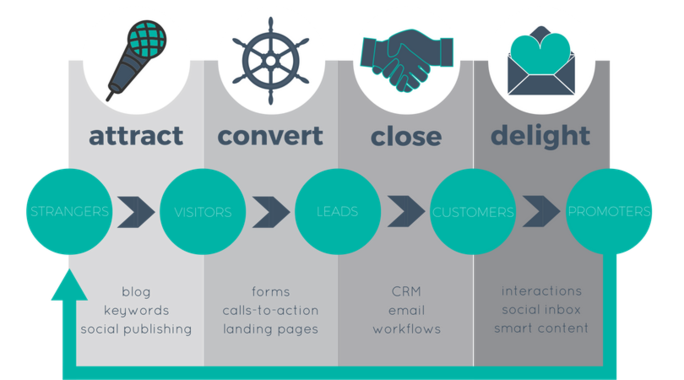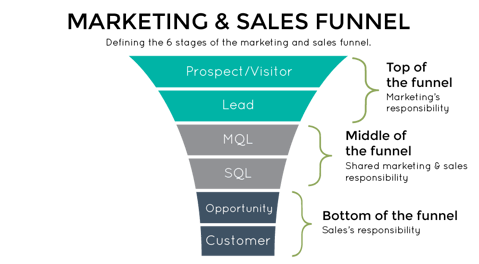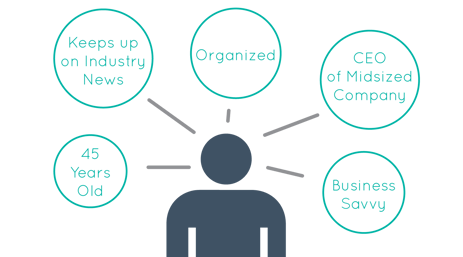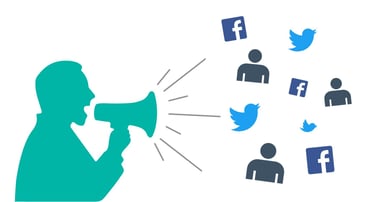What better way to ruin a conversation than by being obnoxious, intrusive and self-centered. Conversations between businesses and their audience are no exception. The inbound marketing movement focuses on attracting customers through relevant and valuable content, allowing businesses the opportunity to make a lasting first impression. So what exactly is inbound marketing and how can your brand communicate effectively with your target audience to increase leads and revenue?
Luckily, there's a new model for marketing to your customers. One that attracts people to your business, rather than only shouting at them, and encourages two-way communication so you can convert the right customers into loyal fans and supporters of your brand. What is this new methodology, you may ask? It's what we like to call inbound marketing.
Inbound marketing takes the 180-degree approach to traditional, or outbound, marketing. Rather than fighting for viewers attention by pushing information out to your current and potential customers, inbound works on bringing people into your business. How you ask? By sharing specifically designed content that your customers want—content that is relevant and useful!
Let's break down the basics of how Inbound Marketing works so you can start turning strangers into customers and customers into promoters of your business:

You don't want just any old visitor to come to your company website. You want qualified visitors who are likely to become leads, sales, and, in the end, happy customers. The best way to start attracting the right people to your business, define the audience you intend to target. These audience segments are known as buyer personas
Dive into what buyer personas are and how to create them in The Age of Inbound.
After defining your audience comes the fun part—getting creative! Search engine optimized pages and shareable content, such as blogs, infographics, and social media
posts, are the most effective way to attract visitors to your website. However, you can't just share any old piece of content with your buyer personas, the content must be educational, empowering and must directly answer their questions.
Once you've developed educational and relevant content that addresses your buyer personas needs, it's time to share the "goods" on the networks where your audience is already spending their time: social media. Whether it's Facebook, Twitter, Instagram, YouTube, or any of the other platforms, you must be present where your ideal customers already are. Don't just share facts, provide value!

Now that you've attracted the right customers to your website, it's time to move them further down the sales funnel and convert them into leads. This requires you to add forms, call-to-actions (CTAs), and landing pages to various pages on your site, so you can begin to capture your visitor's contact information.
Sounds easy enough, right? Well, it kind of is that simple. The key to grabbing this information, value. What are you offering to your customers that will make them give up their information willing? Yes, this is a give-and-take process. In order to get a contact's name, email address, phone number, etc., you must have something to give them in return; and this something comes in the form of a deliverable—i.e. ebook, checklist, tip sheet, webinar recording or training video. This is information they are seeking and information that helps them fill a need.
So a customer has come to your site through a link on social. They landed on a blog post with a CTA to download your ebook and you captured their contact information on a landing page. What happens next? All of the steps leading up to this point have led the visitor further and further down the sales funnel. You've identified them as an interested customer and a qualified lead, so let's close the sale. You can read more about it in Understanding Inbound Sales Methodology.
 When a form is filled out and submitted, the customer's information should go to a CRM system (customer relationship management) where they are stored and separated into groups based on things such as their page views, interests, job title, company size, etc.
When a form is filled out and submitted, the customer's information should go to a CRM system (customer relationship management) where they are stored and separated into groups based on things such as their page views, interests, job title, company size, etc.
With these segmented lists you can target your leads with content that not only aligns with their interests and is relevant to their needs at this specific point in time, but content that puts your business, product, or service on their radar as someone/something that can solve their problem.
CRM's (Customer Relationship Management) are a powerful tool to sort contacts, both current and new, into appropriate segmentations to ensure that you're delivering the right content, to the right person, at the right time.

You've closed the sale and gained a new customer. But the Inbound Marketing Method doesn't stop there. In order to form lasting relationships with your customers, the interactions must extend long after the initial sale.
Continue the conversation by engaging your customers through surveys, additional content offers to support their expressed interests and listening to what they are saying on social media. The more you engage your customers with positive and personal interactions, the more positive they will feel toward your business and the more likely they are to spread the word for you, otherwise known as word of mouth marketing (WOMM), which is good karma and free publicity.
All of these delight tactics present additional opportunities to promote new products, ensure that your customers are happy, and upsell and resell products or services—now that's good customer service!
Leads are not easy to come by. There is fierce competition and its hard to gain the attention of your audience. At least it is for businesses that are only thinking about themselves. Focus on your audience! When you shift your mindset and fully understand your audience, provide them the value they need to build trust before ever trying to sell to them.
The biggest problem in marketing now is that businesses are selling too soon. Earn their trust and establish a relationship to separate your brand from your competition. But, it all starts on the inside. The culture of your company, the employees, and the mindset, all determine how your business will be run and how your audience will view it. The culture of your company is a part of what you have to offer, hence, having a clear communication between all of the levels and departments is crucial to creating relationships with your customers.
So What Are You Waiting For? Strategize your inbound marketing strategy today!
 Learn more about Inbound Marketing with our blogs 13 Signs You Need an Inbound Marketing Agency and What You're Missing Without Inbound.
Learn more about Inbound Marketing with our blogs 13 Signs You Need an Inbound Marketing Agency and What You're Missing Without Inbound.
Are you branding or marketing yourself effectively? In today's competitive marketplace, knowing just how to market yourself will put you above your competition and help to differentiate yourself or your business from others while building...
Cold-calling is dead—or at least it should be. Dating back as far as the 1950s, marketers have interrupted passive audiences with forced, irrelevant messages. What was once seen as an effective B2B (business-to-business) marketing strategy is now...
With the rise of video platfoforms such as Tik Tok, and video features like Instagram Reels, it is crucial to include video marketing in your business growth strategy. Videos are everywhere now, they come into play throughout the entire buyer’s...
ABOUT
Marketing Services
HubSpot Services
Resources
CONTACT
267.982.4044
info@moderndrivenmedia.com
590 Lancaster Ave, Ste 110,
Malvern, PA 19355
Join Our e-newsletter